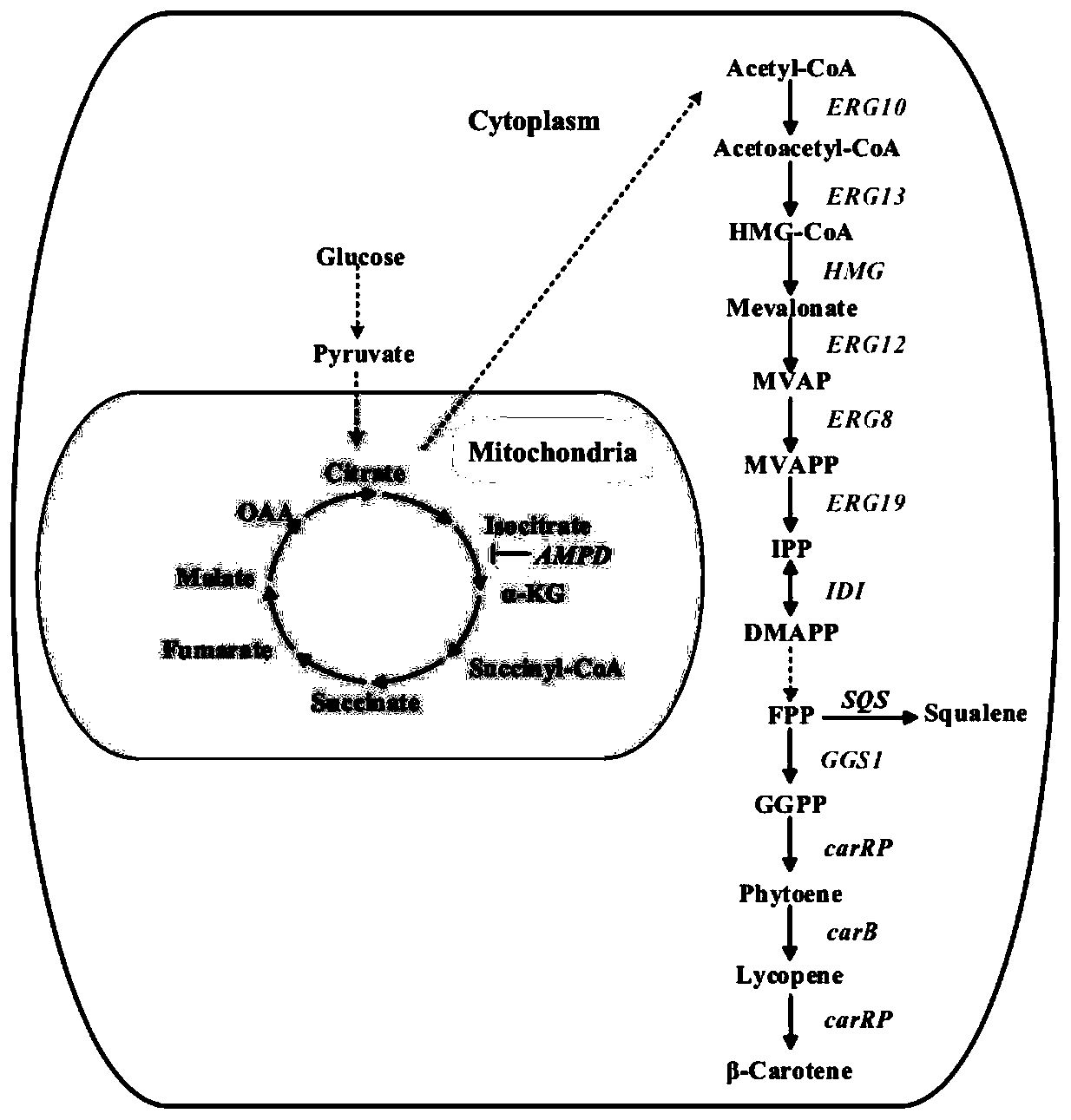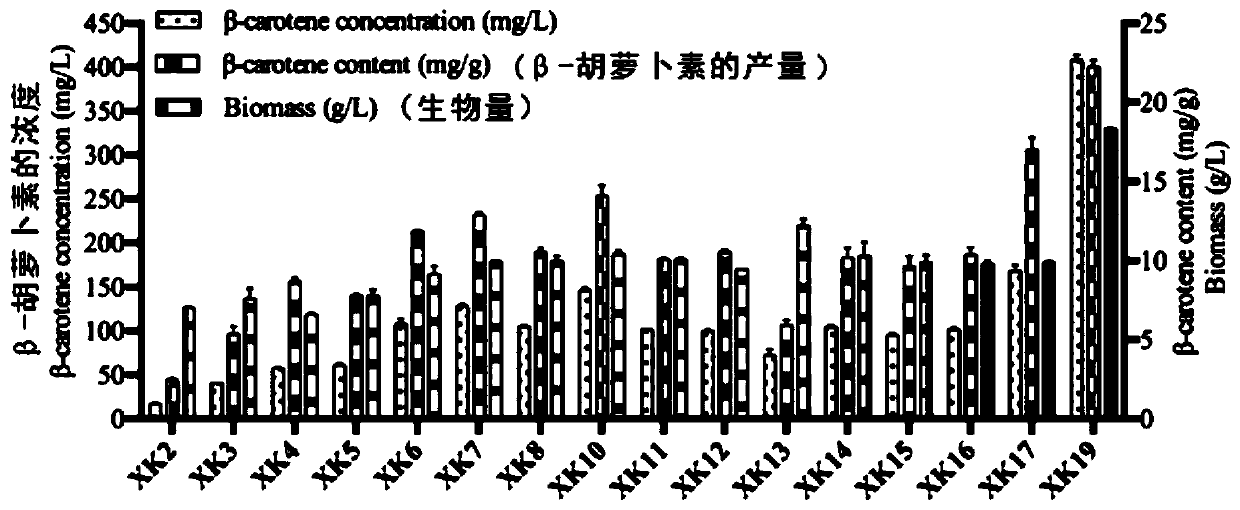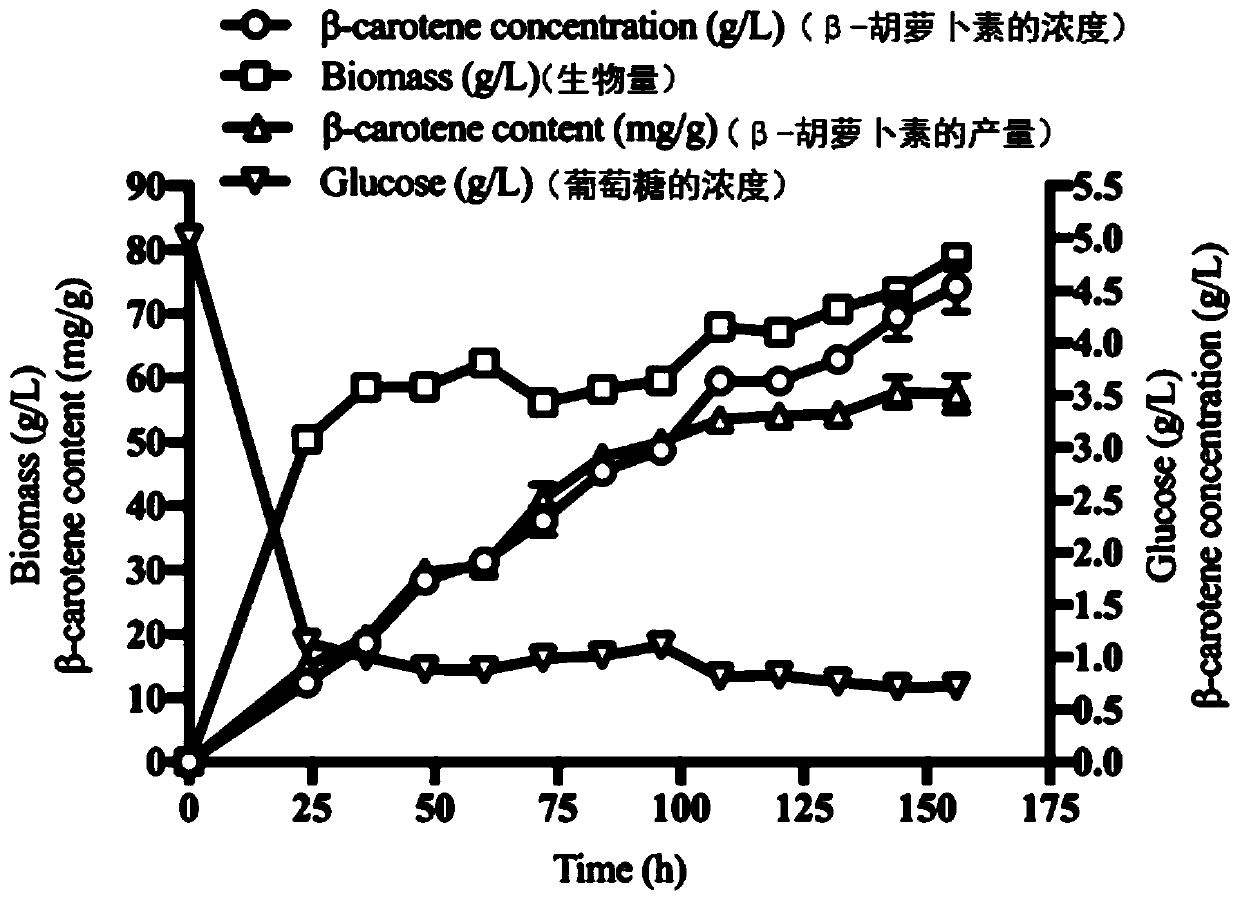Yarrowia lipolytica genetic engineering bacterium for producing beta-carotene and application of yarrowia lipolytica genetic engineering bacterium
A technology of Yarrowia lipolytica and genetically engineered bacteria, applied in the field of genetic engineering, can solve the problems of low yield, low consumption, hindered extraction efficiency and the like
- Summary
- Abstract
- Description
- Claims
- Application Information
AI Technical Summary
Problems solved by technology
Method used
Image
Examples
Embodiment 1
[0155] Example 1 Construction of CRISPR / Cas9 gene knock-in plasmid pair
[0156] The plasmid constructions for different sgRNAs are all based on the purchased plasmid pCRISPRyl, which has a restriction site AvrII, and the upstream of the restriction site contains the promoter SCR1'-tRNAGly to initiate the expression of the sgRNA. The 20bp sequence was inserted into this site to obtain the sgRNA plasmid. Plasmid pCRISPRyl was purified after single digestion with AvrII restriction endonuclease to obtain linearized plasmid pCRISPRyl. The linearized plasmid was respectively combined with sgRNA fragments designed for POX2, POX3, POX4, LIP1, E1, A1, B1, A2, POX6, E2 sites (see SEQ ID NO: 1-SEQ ID NO: 10 in Table 1 ) for seamless cloning to obtain vectors pCRISPRyl_POX2, pCRISPRyl_POX3, pCRISPRyl_POX4, pCRISPRyl_LIP1, pCRISPRyl_E1, pCRISPRyl_A1, pCRISPRyl_B1, pCRISPRyl_A2, pCRISPRyl_POX6, pCRISPRyl_E2.
[0157] (1) Construction of plasmid pHR_POX2_hrGFP: Using the Yarrowia lipolyti...
Embodiment 2
[0167] Example 2 Construction of Yarrowia lipolytica genetically engineered bacteria producing β-carotene
[0168] The schematic diagram of the construction of Yarrowia lipolytica genetic engineering bacteria producing β-carotene of the present invention is as follows Figure 4 shown.
[0169] (1) Based on the existing CRISPR / Cas9 operating system, two pairs of knock-in plasmid pairs were constructed, respectively constructing a knock-in plasmid pair containing an optimized carRP gene and constructing a knock-in plasmid pair containing an optimized carB gene.
[0170] The donor plasmids in the two pairs of knock-in plasmids both contain restriction sites for NheI and BssHII.
[0171] The donor plasmid also contains promoter and / or terminator sequences. More preferably, the donor plasmid also contains a promoter UAS1B8-TEF (136).
[0172] The knock-in plasmid pair in this example is a conventional recombinant vector in the field, wherein the sgRNA plasmid contains a leucine ...
Embodiment 3
[0182] Embodiment 3 Determination of strain produces the output of β-carotene
[0183] The strain Yarrowia lipolytica Po1f and the strains XK2, XK3, XK4, XK5, XK6, XK7, XK8, XK10, XK11, XK12, XK13, XK14, XK15, XK16, XK17 and XK19 prepared in Example 2 were inoculated in 2mL respectively YPD medium (this YPD medium is made up of 2% glucose, 2% peptone and 1% yeast extract, balance is water, and described percentage is mass percentage), cultivated for 24 hours, then with initial OD 600 The inoculum of 0.01 was inoculated into new 50mL YPD medium for culture. After 4 days of fermentation, β-carotene was extracted using DMSO and acetone.
[0184] The results of the test are shown in Table 3 and figure 2 .
[0185] The output of the β-carotene of different bacterial strains of table 3
[0186]
[0187] Table 3 and figure 2 The results show that the ability of strain XK19 to produce β-carotene has been greatly improved. By overexpressing each gene in the MVA pathway, the o...
PUM
 Login to View More
Login to View More Abstract
Description
Claims
Application Information
 Login to View More
Login to View More - R&D
- Intellectual Property
- Life Sciences
- Materials
- Tech Scout
- Unparalleled Data Quality
- Higher Quality Content
- 60% Fewer Hallucinations
Browse by: Latest US Patents, China's latest patents, Technical Efficacy Thesaurus, Application Domain, Technology Topic, Popular Technical Reports.
© 2025 PatSnap. All rights reserved.Legal|Privacy policy|Modern Slavery Act Transparency Statement|Sitemap|About US| Contact US: help@patsnap.com



